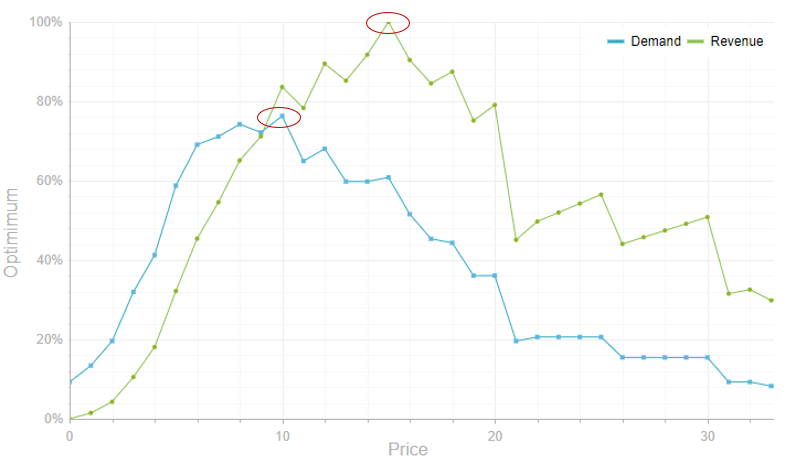10 Reasons Why Start-Ups and Scale-Ups Should Understand their Customers' Willingness-to-Pay
 PriceBeam
·
4 minute read
PriceBeam
·
4 minute read

Being a founder or senior manager in a start-up involves a very diverse set of projects, tasks and challenges. Anything from big strategic thinking over sales, marketing, HR, technology, admin and myriads of other things. So it can sometimes be easy to overlook pricing, even if price is one of the most important decision areas to focus on as a start-up or scale-up. Here are 10 reasons why:
1. Too high a price will kill the business
You will never get off the ground if your price is too high, no matter how hard you work. Some initial sales might be possible through grit, connections, luck or other factors, but if the price is too high versus the value you deliver and the potential customers' willingness-to-pay, there will never be a significant volume.
2. Too low a price will kill the business
While point #1 above is important, so is avoiding having too low a price. And truth be told, having a price that is too low is much more of a common problem than the other way around. Many startups price too low to be on the safe side in sales negotiations. But what it means is that there is not enough profit to fuel day-to-day operations, growth expansion, etc.
3. Price defines your product or service
Buy a watch for $10. Or buy a watch for $5000. In one case it seems (too) cheap. In the other case it seems (too) expensive. So the price that a company puts on their product or service defines what kind of company they want to be and what kind of perception they want customers to have. If the watch in question was made out of pure diamond maybe for $5000 is not too expensive, based on that many customers would be willing to pay that price.
4. Price AND Willingness-to-Pay determine your competitiveness
If your price is 100 and that of the competition is 120, one could think that your solution is competitive. However, if the customers are willing to pay up to 150 for the competitor's solution and "only" 90 or 100 for your solution, then in effect your solution is not competitive, because customers have a better WtP-to-price ratio for the competitive offerings. Alignment with willingness-to-pay is key when it comes to how competitive you are.
5. Start-Ups and Scale-Ups under-price their offerings by 30%
It is our experience that start-ups and scale-ups often want to be on the safe side, both strategically and tactically. Strategically by setting a price well below the incumbent players in the market, so that if nothing else works then at least customers will decide in the start-up's favour on price. Sadly this sometimes becomes a self-fulfilling prophecy where the only parameter that the start-up trades on is price, which is rarely sustainable long-term, as there will always be a new one who is cheaper. Also see point #2 above. Tactically, by being willing too give many discounts in order to close the deal. Through various PriceBeam market studies around the world, we have found that on average start-ups and scale-ups could raise their prices by 30% on average without hurting sales. Note that this doesn't always mean a straight list-price increase, but can also be achieved through changes in discount structures, volume-rebate structures, surcharges, product add-ons and much more.
6. Knowing Willingness-to-Pay per feature/benefit can improve your product or service
Say that a product or service has 10 features or benefits. What if customers put a high value (WtP) on features A and D, and on Benefits 4 and 5. But don't really value features B, C and E, nor Benefits 1,2, and 3. By focusing on the features and benefits that actually matter to the customer (who vote with their money) a start-up or scale-up can drastically improve their products. But this requires willingness-to-pay insights rather than just pushing features that the founder or the engineering team like.
7. The price in your home market is not the best price when selling in another country.
Many scale-ups seek external funding through venture capital or other external means to grow in new markets. This makes great sense. But the mistake often made is then to say: "OK, we are successful in our home market where we sell at a price of 100 Euros. If we convert 100 Euros into e.g. US Dollars we get $113, so that is going to be the price we launch at in the US, especially as we do make a profit at that price / our costs are lower". Wrong!!!! What if US customers are willing to pay $200 for that unique product? What if US customers are willing to pay $80? In the first case the scale-up foregoes massive profits. In the latter, the product is too expensive and most likely the market launch fails.
8. Great price = Investor darling.
Companies who have pricing power yield healthy profits and are therefore investor favourites. PriceBeam has worked for several investors where one of the aims has been to increase the value of their investment by improving prices.
9. Willingness-to-Pay Insights help with developing the next product.
Most businesses don't just sell a single product or service, even if the start-up starts out with that. So when it comes to finding the next product, either as a product extension or as a new complementary product, what should be the price. Many scale-ups make the mistake of simply adding new products and then charging a bit more for that than the base product. But maybe customers are willing to pay twice as much for the product extension because it solves the core customer challenge in half the time as the original. Willingness-to-pay insights can also help understand relationships between different products in the portfolio, and how they optimally should be priced against each other.
10. Price = Profit.
The goal of most businesses. Price is pure profit, so focus on optimizing it from day one. Enough said.
PriceBeam can in less than a week provide solid, quantitative insights into customers' willingness-to-pay in 109 countries world-wide. An example of an output can look something like this:

The two curves show the expected quantity (demand) and revenue at different price points, based on our market research in the given market. In the example above, the optimal price for revenue is 15, and if the price e.g. was set at 20 instead, revenue would be 20 percentage points lower.
Book a free demo without obligation with PriceBeam and we can in half an hour get you ready for the path to understanding what your target market is willing to pay.
If you are an investor in companies, contact us to learn how we have helped investors achieve superior returns through a systematic and scientific approach to pricing in portfolio companies.
.png?width=400&height=100&name=PBLogoTransparent%20(1).png)



